Shows these variation of charge q for two capacitors C1 and C2 The two capacitors have the same plate separation. But the plate area of C2 is double than that of C1. Which of the lines in the figure corresponds to C1 and C2 and why?
 .
.
Since slope of the graph is q/V=C, and has a larger slop than theline B, it represents the capacitor of large capacitance. Further as C∝A and the plate area of C2 is double that of C1,C2 has the larger capacitance, Hence, the line A (with larger slope) represents capacitor C2, and the line B represents capacitor C1.
Topper's Solved these Questions
- BOOK - CENGAGE PHYSICSCHAPTER - CAPACITOR AND CAPACITANCEEXERCISE - Exercise 4.232videos
CAPACITOR AND CAPACITANCE
- BOOK - CENGAGE PHYSICSCHAPTER - CAPACITOR AND CAPACITANCEEXERCISE - Subjective24videos
CAPACITOR AND CAPACITANCE
- BOOK - CENGAGE PHYSICSCHAPTER - CAPACITOR AND CAPACITANCEEXERCISE - Solved Examples10videos
CAPACITOR AND CAPACITANCE
- BOOK - CENGAGE PHYSICSCHAPTER - ATOMSEXERCISE - QUESTION BANK40videos
ATOMS
- BOOK - CENGAGE PHYSICSCHAPTER - CENGAGE PHYSICS DPPEXERCISE - subjective type51videos
CENGAGE PHYSICS DPP
Similar Questions
The given graph in Fig. shows the variation of charge q versus potential difference for two capacitors C1andC2. The two capacitors have same plate sepration, but the plate area of C2 is double that of C1.
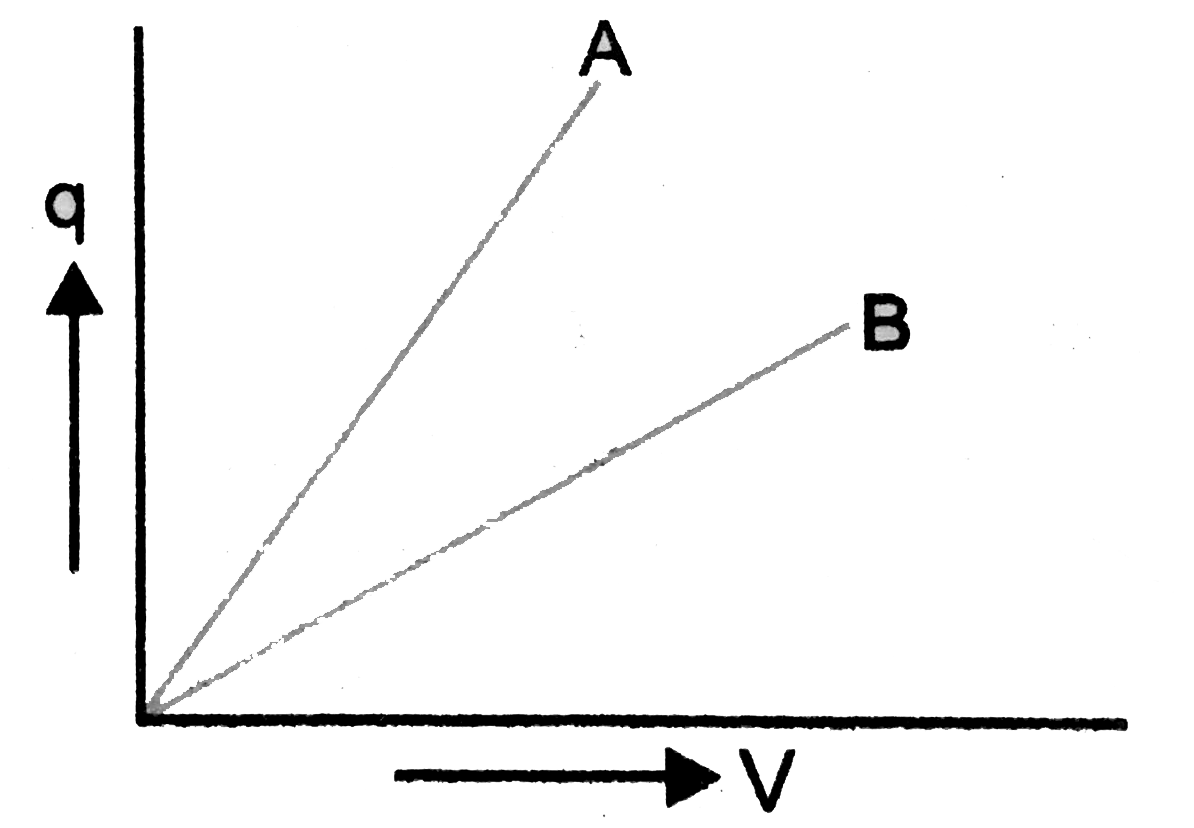
Which of the lines in the graph correspond to C1andC2 and why ?View SolutionThe given graph [Figure] shows variation of charge 'q' versus potential difference V for two capacitors C1andC2. Both the capacitors have same plate separation but plate area of C2 is greater then that of C1. Which line (A or B) corresponds to C1 and why ?
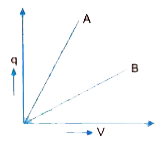 View Solution
View Solution
Knowledge Check
- Question 1 - Select One
Condsider
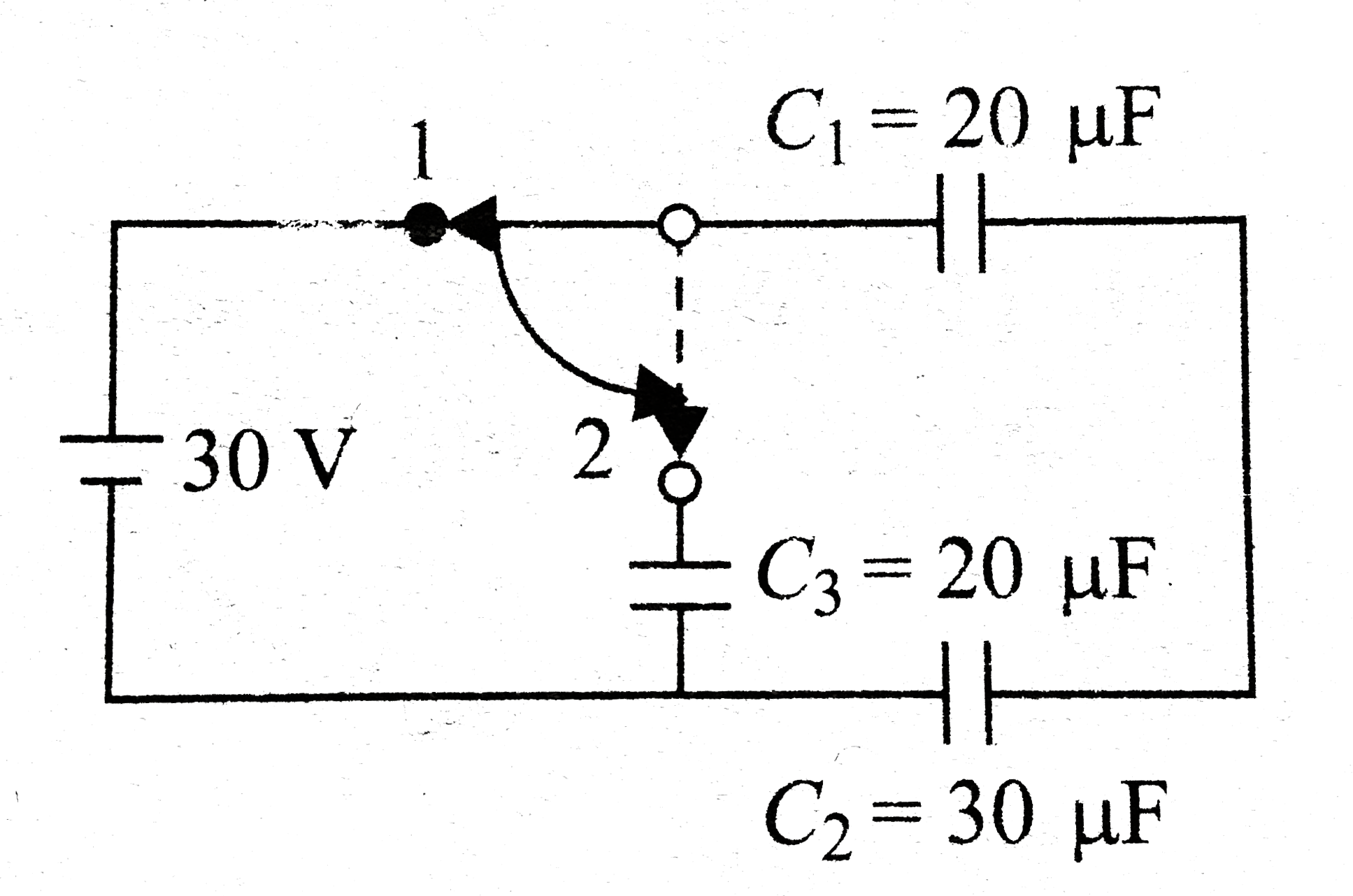 .
.
The charge on capacitor C1 is.A225μCB135μCC270μCD360μC - Question 2 - Select One or More
Two capacitors C1 and C2 are charged to same potential V, but with opposite polarity as shown in the figure. The switches S1 and S2 are then closed
 APotential difference across two capacitors are same and is given by (C1−C2)VC1+C2BPotential difference across two capacitors are same and is given by (C1+C2C1−C2)VCRatio of final energy to initial energy of the system is given by (C1−C2)2(C1+C2)2DRatio of final energy to initial energy of the system is given by (C1)2(C1+C2)2
APotential difference across two capacitors are same and is given by (C1−C2)VC1+C2BPotential difference across two capacitors are same and is given by (C1+C2C1−C2)VCRatio of final energy to initial energy of the system is given by (C1−C2)2(C1+C2)2DRatio of final energy to initial energy of the system is given by (C1)2(C1+C2)2 - Question 3 - Select One
Two capacitors C1andC2 are charged to the same potential V, but with opposite polarity as shown in the figure. The switch S1andS2 are then closed.
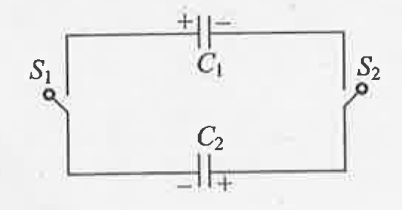 APDs across. Two capacitors are the same and is given by (C1−C2)V(C1+C2)BPDs across two capacitors are the same and is given by C1V(C1+C2)CRatio of final energy to initial energy of the system is ((C1−C2)(C1+C2))2DRatio of final energy to initial energy of the system is ((C1)(C1+C2)2)
APDs across. Two capacitors are the same and is given by (C1−C2)V(C1+C2)BPDs across two capacitors are the same and is given by C1V(C1+C2)CRatio of final energy to initial energy of the system is ((C1−C2)(C1+C2))2DRatio of final energy to initial energy of the system is ((C1)(C1+C2)2)
Two capacitors C1andC2 have the same separation between the plates but the plate area of C2 is twice that of C1. The given graph shows the variation of q with V. Which of the two lines in the graph represents C1 and why?
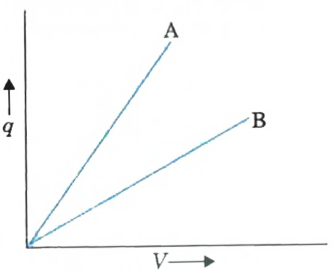 View Solution
View SolutionTwo capacitors C1 and C2 are connected to a battery of 6V as shown in Fig. Find the charge on each capacitor.
 View Solution
View SolutionTwo capacitors C1 and C2 are connected in a circuit as shown in figure. The potential difference (VA−VB) is
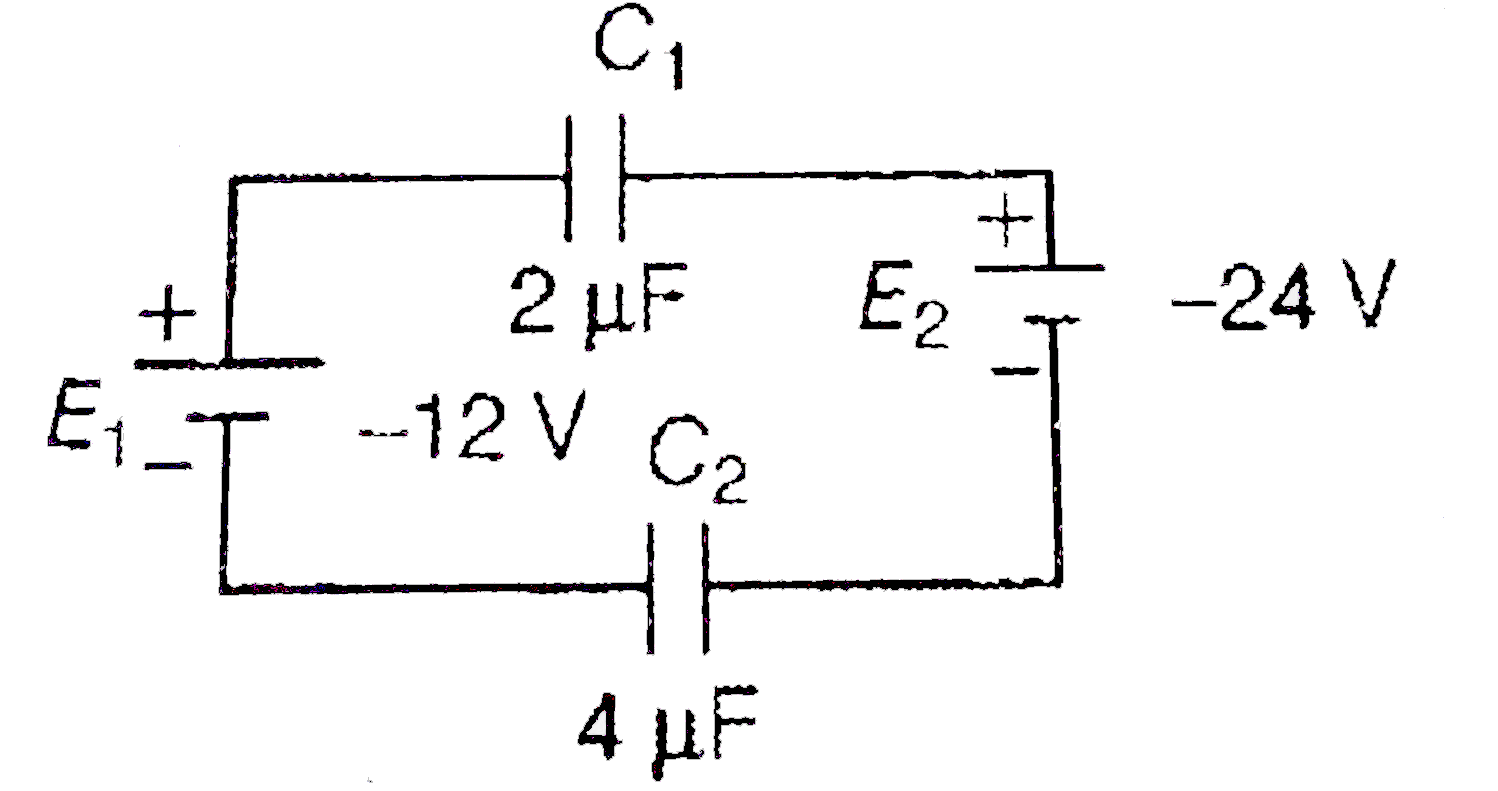 View Solution
View Solutionif two capacitors of capacities C1=4μFandC2=1μF are connected in series, the ratio of the potential drops across the capacitors C1andC2 is
View SolutionTwo capacitors of capacitances C1 and C2 are connected in parallel. If a charge Q is given to the combination, the ratio of the charge on the capacitor C1 to the charge on C2 will be
View Solution

